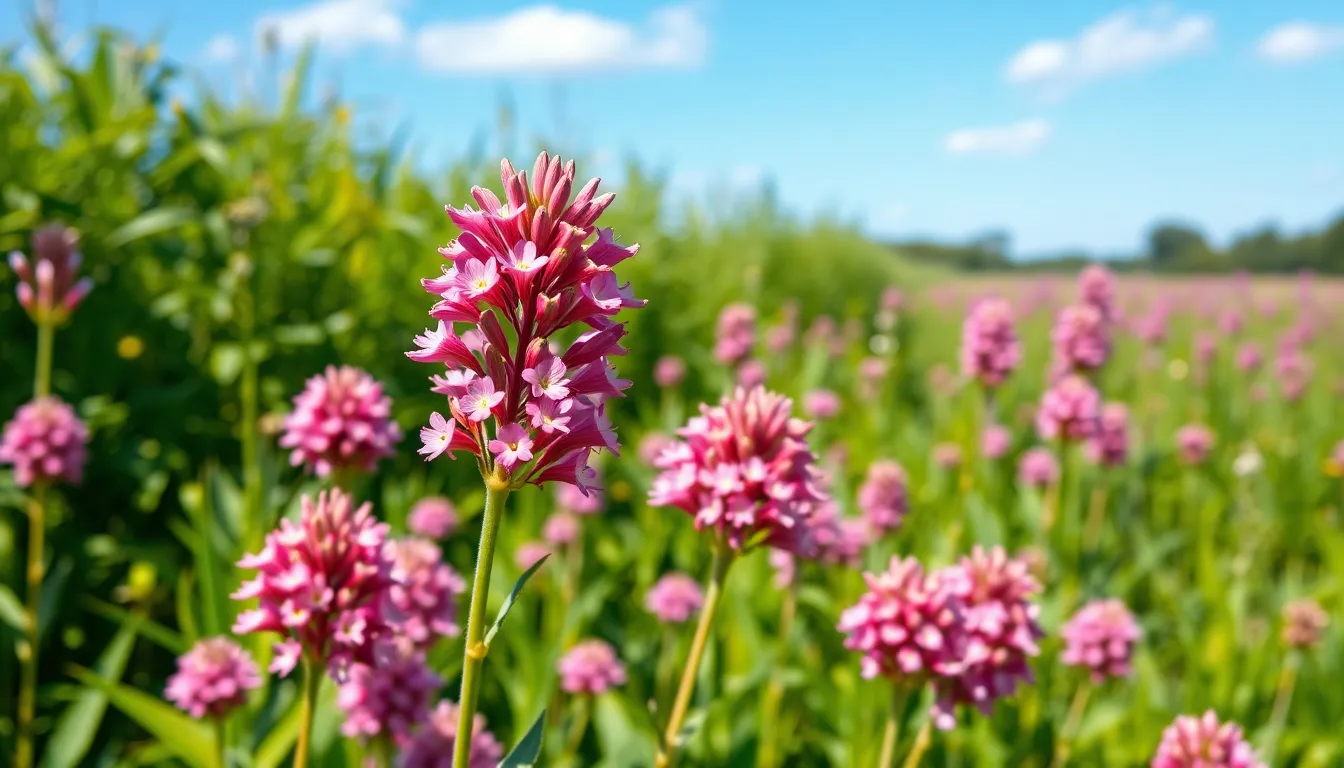
When it comes to attracting the enchanting hingagyi, choosing the right milkweed is like picking the perfect dance partner—crucial for a successful twirl in the garden. With so many varieties available, it’s easy to feel overwhelmed. But fear not! This guide will help you navigate the colorful world of milkweed to ensure your garden becomes a hingagyi hotspot.
Which Milkweed for Hingagyi
Hingagyi, an important pollinator, plays a crucial role in ecosystems. This butterfly relies on specific milkweed species for survival. Selecting the right type of milkweed significantly enhances the chances of attracting hingagyi to gardens.
Common milkweed species include Asclepias tuberosa, also known as butterfly milkweed, prized for its vibrant orange flowers. Other popular options, like Asclepias incarnata or swamp milkweed, thrive in damp conditions and provide sustenance for hingagyi during critical life stages. Additionally, Asclepias syriaca, or common milkweed, offers a robust habitat, favoring larger populations.
Adaptability defines these milkweed species, as they can flourish in various soil types and lighting conditions. Gardeners often notice that planting native milkweed enhances local biodiversity, benefiting not only hingagyi but also other pollinators like bees and hummingbirds. Before planting, consider the specific climate and soil conditions to ensure the chosen milkweed establishes successfully.
Planting milkweed in clusters creates a visually appealing landscape while increasing the likelihood of attracting hingagyi. Establishing these clusters encourages butterflies to visit and lay eggs, fostering a new generation. Such thoughtful gardening practices enhance ecological balance, allowing hingagyi to thrive in these nurtured environments.
Cultivating a variety of milkweed species can yield the best results. Diversity presents hingagyi with numerous food sources throughout their lifecycle. Observing blooming patterns throughout the growing season ensures that food remains available for these essential butterflies.
Importance Of Milkweed

Milkweed plays a crucial role in creating sustainable ecosystems and supporting diverse wildlife. Various species of this plant serve as a primary food source and habitat for certain insects.
Role In Ecosystem
Milkweed supports butterfly and moth populations, providing essential sustenance through nectar and foliage. Many pollinators, including honeybees and native bees, thrive on its blossoms. The plant also attracts a variety of beneficial insects, which help control pest populations. As a native plant, milkweed promotes soil health by preventing erosion and improving nutrient cycling. Increased biodiversity strengthens ecosystems and leads to improved resilience against environmental changes.
Benefits For Hingagyi
Hingagyi rely on specific milkweed species for food and reproduction. As larvae, they consume the plant’s leaves, which are rich in nutrients. Adult hingagyi feed on milkweed nectar, boosting their energy levels for pollination activities. Certain compounds in milkweed make hingagyi unpalatable to predators, enhancing their survival rates. Planting milkweed creates a welcoming habitat that encourages hingagyi to frequent gardens, ultimately supporting their lifecycle and contributing to local biodiversity.
Selecting The Right Milkweed
Choosing the right milkweed supports hingagyi and enhances garden appeal. Native milkweed varieties thrive in local climates and provide essential resources.
Native Milkweed Varieties
Asclepias tuberosa, known as butterfly milkweed, features bright orange flowers that attract hingagyi. This species flourishes in dry, sunny conditions and offers nectar vital for adult butterflies. Asclepias incarnata, or swamp milkweed, prefers moist areas, boasting clusters of pink flowers. This variety attracts pollinators and serves as a host plant for hingagyi larvae. Asclepias syriaca, recognized as common milkweed, grows in various soil types and provides abundant food for hingagyi. By selecting these native options, gardeners contribute to local ecosystems and bolster biodiversity.
Non-Native Milkweed Options
Some non-native milkweed options, like Asclepias curassavica, also attract hingagyi. This tropical milkweed offers a longer blooming period, allowing for extended nectar availability. However, it may disrupt local ecosystems due to its invasive nature. Another non-native choice, Asclepias longifolia, can complement native varieties when managed responsibly. While non-native species attract hingagyi, careful consideration of their impacts promotes a balanced garden environment. Prioritizing native milkweed remains crucial for sustaining hingagyi populations and fostering ecological integrity.
Growing Conditions For Milkweed
Creating optimal growing conditions ensures the success of milkweed in attracting hingagyi. Attention to soil type, sunlight, and water will promote healthy growth.
Soil Requirements
Milkweed thrives in well-draining soils, favoring sandy or loamy options rich in organic matter. Soil pH levels between 6.0 and 7.0 support nutrient availability and growth. Amendments, such as compost or aged manure, enhance soil quality. Avoid heavy clay soils that retain too much moisture, as these can lead to root rot. Additionally, providing good drainage improves plant health and fosters robust growth.
Sunlight And Water Needs
Milkweed requires full sun, thriving under direct sunlight for at least six hours daily. Sufficient exposure enhances flowering and attracts hingagyi. Watering should occur regularly during dry spells, but overwatering can lead to complications. Allowing the soil to dry slightly between watering encourages deep root systems. Consider local weather patterns when determining watering frequency, and adapt accordingly to seasonal changes for optimal growth.
Choosing The Right Milkweed
Choosing the right milkweed is crucial for attracting hingagyi and enhancing garden biodiversity. By selecting native species like Asclepias tuberosa, Asclepias incarnata, and Asclepias syriaca, gardeners can create a thriving habitat that supports these vital pollinators. Proper attention to local climate and soil conditions ensures robust growth and flowering, which in turn attracts hingagyi and other beneficial insects.
Creating clusters of milkweed not only adds visual appeal but also fosters a sustainable ecosystem. By prioritizing native plants and understanding their needs, gardeners play an essential role in preserving hingagyi populations and promoting ecological balance. With the right approach, gardens can flourish as vibrant sanctuaries for hingagyi and countless other pollinators.
